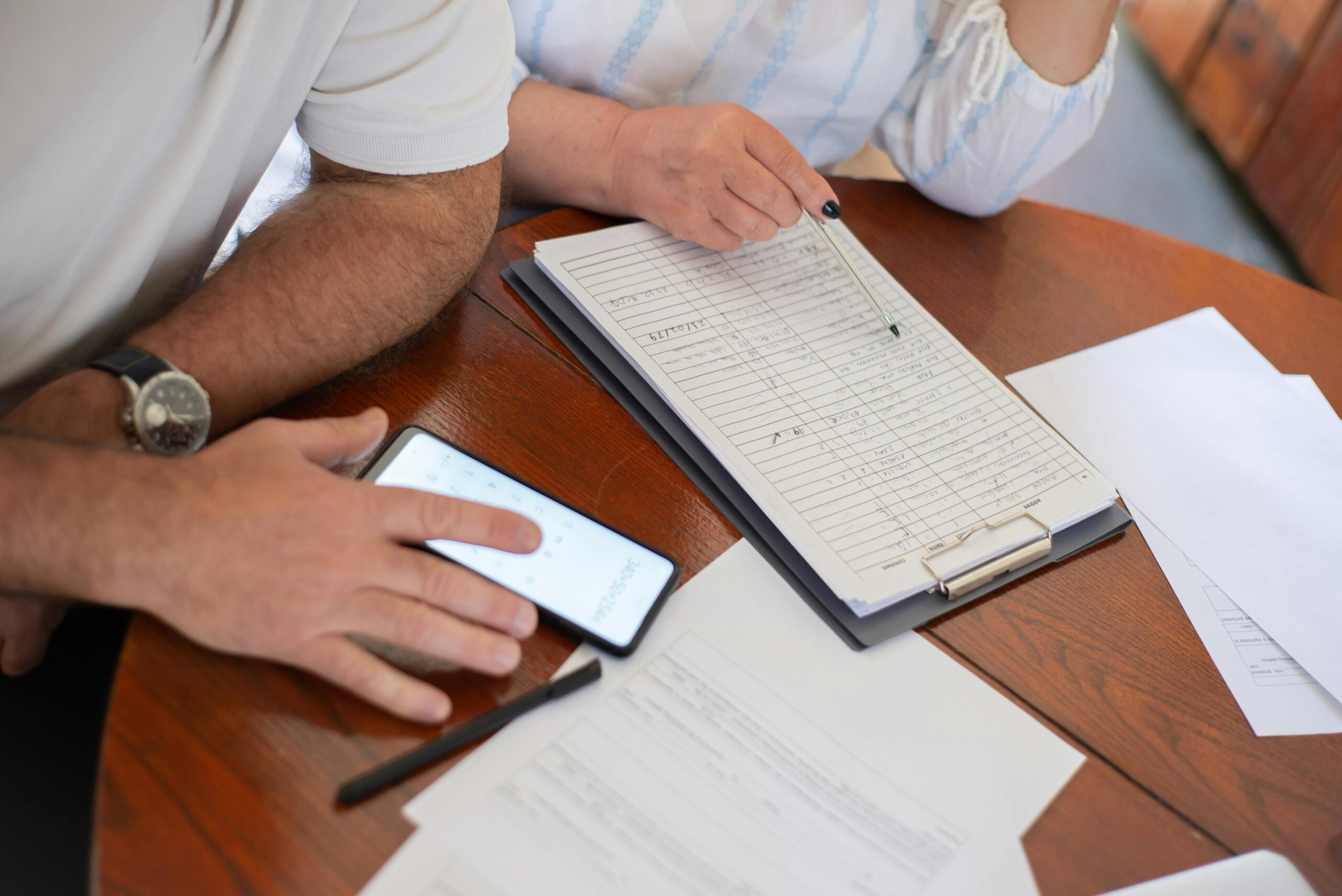You’ve built something brilliant. It solves a real problem. It’s new, smart, and maybe even game-changing. You know it needs protection. But you’re building fast. You don’t want to slow down for a complex legal maze. Especially not one that involves different countries, different rules, and, let’s be honest, different headaches. That’s where this question gets real: can AI actually help you file patents—not just in your home country—but around the world?
How Patent Filing Works in Different Countries
Strategy First, Then Filing
Before diving into the specifics of filing in different countries, here’s something most businesses miss: filing patents globally isn’t just a legal exercise—it’s a strategic one.
If you’re thinking about international protection, the very first question should be: where do you expect value?
Start by mapping your commercial footprint. Where are your current and future customers? Where are your competitors based?
Where might copycats try to undercut you? Your answers will help you decide which countries matter most for your IP.
This isn’t about covering every corner of the world—it’s about filing where it counts. That’s what makes your patent portfolio lean, defensible, and smart.
A lot of businesses spread themselves too thin early on.
They spend heavily on multiple filings without understanding which regions really impact revenue.
Others file in just one country and end up exposed in key markets.
AI can help you avoid both extremes by giving you visibility and flexibility. But the first move has to be strategic.
Different Rules, Different Realities
The U.S. is a fast-moving system. You can file a provisional patent application quickly to lock in your filing date, then convert it into a full application within a year.
It allows broad protection, especially for software and digital tech.
But the trade-off is unpredictability—your application can be challenged, and enforcement can get expensive.
In Europe, the system is more structured. The European Patent Office has tighter standards around clarity and inventive step.
What passes as patentable in the U.S. might be too vague or obvious in Europe.
But once granted, a European patent gives you strong coverage across many countries—making it a valuable asset, especially if you’re operating across the EU.
In China, the pace is different. China has become one of the most active jurisdictions for patent filings.
Enforcement is improving, and the government actively encourages local innovation.
If your product could be manufactured or sold in Asia, China deserves a look. But the filing process often demands technical precision and fast action.
If you’re using AI tools like PowerPatent, make sure they can format and localize claims properly for Chinese authorities.
Japan and Korea both have rigorous patent offices. They reward clarity and technical depth.
If your invention involves hardware, semiconductors, or deep tech, these are must-consider jurisdictions.
But again, applications need to be precise. Loose or general claims will be rejected.
That’s why using AI to get your language tight—and then having attorneys clean it up—is such a winning combo.
Brazil, India, and other emerging markets offer long-term upside.
Filing there can take longer and may involve more paperwork, but as these economies grow, your patent can become more valuable.
The key is to balance short-term costs with long-term potential.
How to Avoid Global Filing Traps
Timing is everything. Once you file in one country, the clock starts. Most global filings stem from your first application—usually called the priority filing.
From that date, you typically have 12 months to file in other countries and claim that earlier priority. Miss that window, and your global options narrow fast.
AI platforms like PowerPatent can help you manage this.
They’ll track deadlines, organize filings by jurisdiction, and prompt you when it’s time to act.
But even with smart tech, it’s up to you to build a timeline that fits your business goals.
Another common trap is reusing the same patent application in every country. It might seem efficient, but each country has specific formats and legal preferences.
A one-size-fits-all patent is more likely to get rejected. Or worse—it gets granted but weakly enforced. That’s why localization is key.
AI can adapt your draft to meet each jurisdiction’s preferences, but you still want human attorneys to oversee the fine-tuning.
This hybrid model gives you localized strength without slowing you down.
The Role of the PCT System
If you want to keep your options open globally but don’t want to file everywhere at once, the Patent Cooperation Treaty (PCT) is your best tool.
It lets you file one international application, which then holds your place in over 150 countries.
You typically get 30 months from your initial filing to decide where you want to go next.
This gives your business breathing room.
You can explore markets, raise funding, validate your product—and then decide which countries to file in when you’re ready.
AI-powered systems like PowerPatent can generate a strong PCT application upfront, then guide you through each national phase later, with jurisdiction-specific adjustments.
This is how smart businesses grow: they file early, keep options open, and scale protection only when it makes sense.
Want a patent process that grows with your business? This is where to start: https://powerpatent.com/how-it-works
How AI Understands Different Patent Systems
Beyond Language: AI Reads the Legal Culture
When people think about filing patents globally, the first thought is usually language. Can the AI translate my U.S. draft into Chinese, Japanese, or German?
That’s a fair question—but it’s only the surface layer. The deeper challenge is not language. It’s culture.
And AI needs to understand legal culture to be truly effective.
Every patent office has a certain tone and personality. Examiners in Germany expect tight, formal phrasing with zero fluff.
In Korea, there’s often a stronger focus on practical use and industry fit. In the U.S., you have some room to tell a story—explain the innovation and its potential.
The most advanced AI systems, like what PowerPatent uses, are trained on not just language—but tone, intent, and structure.
They don’t just translate—they mimic the mindset of each jurisdiction.
This means your application won’t just be readable—it’ll be familiar. That familiarity builds trust with patent examiners.
And trust leads to smoother prosecution, fewer objections, and faster approvals.
If your invention matters, then how you explain it matters just as much. And that explanation needs to be shaped for the local audience.
Structuring Claims the Local Way
The way you write claims can make or break a patent. In some jurisdictions, claim structure is everything.
If your claims are too narrow, competitors can design around them. If they’re too broad, the application will get rejected—or worse, invalidated later.
What makes this tricky is that different countries read claims differently.
For example, the U.S. uses a doctrine called “means-plus-function” in some cases.
Europe does not. Japan favors a functional approach that includes detailed embodiments. Brazil has specific phrasing rules that don’t exist elsewhere.
AI that understands this doesn’t just reword a claim. It rebuilds the logic. It adapts the format to what examiners in that country expect.
That’s the difference between a generic draft and one that actually gets approved.
So if you’re planning to file internationally, don’t rely on copy-paste claims. Use AI to reshape each claim set based on local logic.
Then use attorneys to stress-test the claims before filing. That’s how you build IP that actually holds up in court—and in the market.
How AI Learns Legal Interpretation
Here’s something most people don’t realize: AI doesn’t just write—it reads.
It consumes hundreds of thousands of past filings, approvals, rejections, and litigation outcomes.
Over time, it starts to see patterns. It can spot what types of claims are most often approved in a certain region.
It knows how certain phrases are interpreted, and which ones cause red flags.
This makes AI not just a drafting tool, but a risk-reduction engine. It can warn you if your invention description might be flagged as unpatentable in Europe.
It can suggest alternatives to language that might trigger extra scrutiny in China.
This is critical for startups that don’t have time—or budget—for trial and error.
When combined with attorney oversight, this kind of insight becomes incredibly powerful. You’re not flying blind.
You’re using data-driven drafting to avoid rejection before it happens. And you’re learning what works—not just from law books, but from real-world outcomes.
Using AI to Build a Global IP Strategy
Think of AI as your patent strategist. It’s not just helping you file—it’s helping you win.
By understanding the strengths and weaknesses of each system, AI can guide you toward a smarter filing plan.
For example, it might flag that your current draft is strong in the U.S. but too abstract for Japan. That lets you adjust early—before you waste time or money.
It might even suggest phasing your applications based on what’s most defensible.
If your invention has one very technical component, AI might recommend leading with that in Europe.

If the business model is the innovation, the U.S. might be a better first step.
This level of insight used to require a global legal team. Now, it’s built into platforms like PowerPatent.
For businesses, this is a major shift. You don’t have to figure out each system by yourself. You don’t have to depend on local lawyers with inconsistent pricing and quality.
You can use a single AI-driven platform that sees the whole map—and helps you plan accordingly.
That’s not just smarter. It’s transformative.
If you want to explore how AI can make your patent filings stronger in every country that matters to your business, this is the place to start: https://powerpatent.com/how-it-works
The Challenges AI Faces in Global Patent Drafting
The Law Is Always Changing
One big challenge is that patent laws change. And they don’t all change at the same time.
The U.S. might update its rules on patent eligibility. China might shift its approach to biotech patents.
Europe could tighten up rules around AI-related inventions. AI systems have to stay up-to-date with all of this.
That means the AI can’t be static. It can’t just rely on old data. It has to keep learning, evolving, and adjusting.
That’s why PowerPatent doesn’t just rely on automation.
The software is regularly updated, and real patent professionals oversee the final work. So you’re not left behind when something changes.
If you’re thinking long-term, this really matters. Filing a patent today means you’re committing to a 20-year plan.
You want that protection to last. And the best way to future-proof your patents is to start with something strong—drafted with the latest rules in mind.
Cultural Context Matters
Here’s something else that’s easy to miss: writing style and tone matter, especially in legal documents.
A claim that sounds strong in one country might come off as vague or overreaching in another. AI needs to recognize this and adjust its language.
Even simple words can have different meanings. For instance, the term “means for” in the U.S. carries a very specific legal implication.
In Europe, it might not have the same weight. That’s the kind of subtlety only the best AI tools—and experienced attorneys—can catch.
So when you use AI to draft globally, you’re not just asking it to write.
You’re asking it to write for people in different countries, with different expectations, and different legal systems.
That’s no small task. But with the right tech and legal support, it’s doable.
Timing and Deadlines Are Different
Every country has its own timeline. Some give you a grace period after public disclosure. Others don’t.
Some give you 12 months after filing to enter national phases. Others require you to file first, before you show your idea to the world.
AI needs to keep track of all this.
That’s why global patent filing isn’t just about writing. It’s also about timing. AI tools can help manage these deadlines.
They can send alerts. They can keep your roadmap clean. But again, it works best when combined with humans who can catch edge cases and legal traps.
So when you’re planning to protect your invention worldwide, think beyond the draft. Think about the full path.
AI should help you write, yes—but also help you manage the timing, the process, and the follow-up.
That’s what you get with platforms like PowerPatent. Not just words on paper, but a real system to protect what you’re building.
You Can’t Afford to Be Generic
Generic patents don’t protect anything. They get rejected. Or worse—they get approved, but offer zero real protection. That’s a waste of time and money.
AI can sometimes fall into this trap if it’s not trained well. It might use boilerplate language. It might write vague claims.

It might not tailor the application to your invention or the target country. That’s why AI needs high-quality data, smart algorithms, and human review.
When used right, AI can actually make your patents sharper.
It can compare thousands of past cases, identify patterns, and help you write something clear, strong, and defensible.
It’s not about cutting corners. It’s about using the best tools available to do smarter work.
You’re building something unique. Your patent should be too.
And that’s why founders love using PowerPatent. You get precision without the pain. You get speed without giving up quality.
You get a system that’s built for builders like you.
Still curious how it works? It’s all here: https://powerpatent.com/how-it-works
What Countries Are Doing About AI and Patents
Some Welcome It. Some Don’t.
Here’s something you might not expect: different countries are reacting to AI in patent drafting very differently.
Some are fully embracing it. Others are cautious. And a few are actively questioning whether AI-created inventions should even be patentable.
Let’s break it down in plain terms.
In the U.S., the patent office has started to acknowledge that AI is part of the process now.
They don’t have a problem with patents drafted using AI—as long as a human inventor is still behind the idea.
That means you can use AI tools to help write and file, but you can’t say the AI created the invention on its own.
Europe is a bit stricter. The European Patent Office also says the inventor has to be human.
They’re okay with using AI as a tool, but not as a source of creativity. So again, you can draft using AI, but you can’t give the machine credit.
China, on the other hand, is moving fast. They’ve actually increased the number of AI-related patents they accept.
And they’ve built new systems to handle the high volume of filings from tech companies. It’s becoming one of the easiest places to file if your invention involves AI.
Australia and South Africa briefly allowed patents listing AI as the inventor. That raised a lot of eyebrows.
Eventually, courts stepped in and pushed back. So for now, most countries still say the inventor must be human. But that may change in the future.
What does all this mean for you? If you’re a founder using AI to help draft your patent—whether for a medical device, a piece of software, or a new machine—you’re fine.
But if you’re trying to patent something that was created by AI alone, you’ll likely run into legal walls.
Still, there’s good news. Across the board, patent offices are starting to accept the use of AI in the process.
And that means tools like PowerPatent are perfectly positioned to help you file across jurisdictions, legally and effectively.
The Rules Are Still Forming
We’re in new territory. This has never happened before at this scale. And lawmakers are still figuring things out.
Some countries are writing new guidelines. Others are watching and waiting.
But everywhere, one thing is clear: the old system is being tested by new technology.

You don’t have to worry about that. What matters is this: if your idea is original, useful, and not obvious, you have a shot at getting a patent.
And if you use AI to help you draft it, that’s allowed—as long as a real person stands behind the invention.
This shift is good for startups. It levels the playing field. In the past, only big companies with deep pockets could afford to file globally.
Now, thanks to AI and smarter platforms, startups can do the same—faster, cheaper, and with more confidence.
That’s the whole point of PowerPatent. We give you access to tools that were once reserved for huge legal teams.
Now, you can file in multiple countries, without hiring lawyers in each one. You get the AI boost, but you also get attorney support to make it count.
Curious about how global protection actually works? Learn more here: https://powerpatent.com/how-it-works
What AI Can (and Can’t) Do in International Patent Drafting
It Can Draft Faster Than Any Human
This is where AI really shines. What used to take weeks can now take hours.
AI can process massive amounts of information—past patents, technical documentation, legal frameworks—and turn that into a first draft in a fraction of the time.
That means you don’t have to wait weeks for a law firm to put together a document. You can get a working draft fast, tweak it, and move forward.
Speed matters. Especially if you’re racing to launch a product, pitch to investors, or file before someone else does.
AI helps you stay ahead, without burning out your team or draining your cash.
And with PowerPatent, that speed doesn’t mean sloppiness. Every AI-generated draft is reviewed and finalized by real patent attorneys.
So you get the best of both worlds—fast execution and legal accuracy.
It Can Translate Legal and Technical Language
Different countries use different words to describe the same thing.
AI can bridge that gap. It can take a technical invention written in plain English and reframe it in the language of a European or Japanese examiner.
That’s a huge deal because small language mistakes can get your application rejected—or worse, weaken your protection later on.
Good AI doesn’t just translate words. It translates ideas. It captures the structure and logic behind how patent offices think.
That’s how it helps you write smarter patents that work in multiple jurisdictions.
For example, if your claim is too broad for Europe, the AI can flag that. If the structure doesn’t follow Japan’s required format, it can adjust.
You don’t have to worry about writing in “legal speak” for each country. The system does it for you.
It Can’t Replace Human Judgment
As good as AI is, it’s not a lawyer. It doesn’t understand your business strategy, your market positioning, or the value of your IP in the context of your company.
It doesn’t make judgment calls about what’s worth protecting or how to phrase claims for maximum strength.
That’s why PowerPatent never removes the human part of the process. AI is the engine. But attorneys are the drivers.
They make sure every draft is not only legally sound, but strategically smart. They help tailor your patent to your goals, not just the law.

So yes, AI can do a lot. But the best results come from combining machine efficiency with human insight. It’s not either-or—it’s both.
It Can’t Handle Edge Cases Alone
Every invention is different. Some are easy to describe. Others are deeply complex, involving new science, abstract ideas, or multi-step systems.
AI can write strong drafts for many kinds of inventions.
But for edge cases—like biotech processes, decentralized protocols, or hybrid systems—human input is key.
The AI can still help you get started. It can build a structure, suggest wording, and outline your claims. But for edge cases, the attorney’s job is to finesse the draft.
To explain the invention in a way that makes sense to an examiner who might not be an expert in your field.
That’s another reason why PowerPatent pairs AI with expert oversight. You never go it alone.
You’re backed by people who’ve filed across all major jurisdictions—and who know how to turn complexity into clarity.
Wondering how to apply this to your own invention? Take a look at how the full process works: https://powerpatent.com/how-it-works
How PowerPatent Makes Global Filing Simple
One Platform, Many Countries
The old way of filing patents internationally is complicated. You’d start with one law firm in your home country.
Then they’d refer you to other firms in Europe, Asia, or wherever you need protection. Each firm would have its own process, timeline, and pricing.
You’d juggle emails, documents, translations, and deadlines. It was slow. It was expensive. It was a mess.
PowerPatent changes all of that.
Instead of managing ten different relationships, you use one platform. You start your application once.
You feed in your invention—your idea, your code, your prototype. The AI gets to work. It builds a draft tailored to your invention.
Then, real patent attorneys step in and shape that draft into a strong, jurisdiction-specific filing.
When you’re ready to file in another country, the system knows how to adjust. It handles the formatting. It fits the local rules.
And you still have a patent attorney making sure it’s done right. You don’t have to learn a new system every time. You just keep building.
No Guesswork
The scariest part about patents is the uncertainty.
Are you filing the right way? Will this protect you where it matters? Are you missing deadlines? Are your claims too narrow—or too broad?
With PowerPatent, you get clarity.
You’re guided step-by-step. You don’t have to guess how to describe your invention. The software prompts you with smart questions.
It helps you break down your idea into clear parts. It shows you examples. It even predicts which parts of your invention are most likely to be patentable.
The AI doesn’t just draft. It teaches.
And the attorneys who review your application help make sure your claims are strong enough to defend but not so broad that they’ll be rejected.
That’s what makes this different from using a generic patent template or a chatbot.
This is a purpose-built system for serious inventors who want to move fast—and protect what they’re building.
You Stay in Control
In the old model, the law firm ran the process. You sent in your notes, and they sent you drafts weeks later.
If you wanted to make changes, it took more time—and more money.
With PowerPatent, you’re in the driver’s seat. You can see your draft evolve in real-time. You can tweak language, add diagrams, or adjust claims.
You can ask for help when you need it—but you’re not locked out of the process.
This is your IP. You should be in control. And this platform is built to give you that control—without requiring you to become a patent lawyer.
That’s especially powerful if you’re a startup. You can iterate as your product evolves. You can align your IP strategy with your fundraising milestones.

And you can expand globally without adding legal headaches.
It’s built for builders. Simple as that.
Want to see how global filing actually happens inside the platform? Take the tour: https://powerpatent.com/how-it-works
Wrapping It Up
The world has changed. Innovation moves faster than ever. Products launch across continents in days, not years. Startups scale globally from the first line of code. But for too long, the patent world stayed slow, expensive, and stuck in the past.

